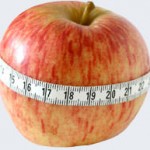Food Jewels
 Super foods are foods that contain high levels of nutrients. Okra is a super food. Not only that, it’s a food that links many African cultures. From Okra Soup cooked with palm oil in western Africa to Gumbo in southern United States, Okra is considered a valuable source of nutrition as well as a comfort food. Okra is a superfood because it contains high levels of B Vitamins, fiber, iron, and Vitamin C.Studies published in 2010 and 2011 in the “Nutrition Journal” and the “African Journal of Biotechnology” indicate that okra has a higher concentration of antioxidant compounds than other high-antioxidant vegetables, as well as many high-antioxidant fruits. Antioxidants are able to inhibit the ability of free radicals to damage DNA and cellular tissue. The Mayo Clinic’s Donald Hensrud, M.D., says that a diet incorporating lots of antioxidants may help prevent heart disease, cancer and neurological disorders like Alzheimer’s disease.
Super foods are foods that contain high levels of nutrients. Okra is a super food. Not only that, it’s a food that links many African cultures. From Okra Soup cooked with palm oil in western Africa to Gumbo in southern United States, Okra is considered a valuable source of nutrition as well as a comfort food. Okra is a superfood because it contains high levels of B Vitamins, fiber, iron, and Vitamin C.Studies published in 2010 and 2011 in the “Nutrition Journal” and the “African Journal of Biotechnology” indicate that okra has a higher concentration of antioxidant compounds than other high-antioxidant vegetables, as well as many high-antioxidant fruits. Antioxidants are able to inhibit the ability of free radicals to damage DNA and cellular tissue. The Mayo Clinic’s Donald Hensrud, M.D., says that a diet incorporating lots of antioxidants may help prevent heart disease, cancer and neurological disorders like Alzheimer’s disease.
Okra has been said to have many health benefits like the following:
- The mucilage and fiber found in okra helps adjust blood sugar by regulating its absorption in the small intestine.
- The fiber of okra has many superior qualities in maintaining the health of the gastro-intestinal tract.
- It helps reabsorb water and traps excess cholesterol, metabolic toxins and surplus bile in its mucilage and slips it out through the stool. Due to greater percentage of water in the bulk it thereby prevents constipation, gas and bloating in the abdomen.
- It is an ideal vegetable for weight loss and is storehouse of health benefits provided it is cooked over low flame to retain its properties. This also ensures that the invaluable mucilage contained in it is not lost to high heat.
- Okra facilitates the growth of good bacteria referred to as probiotics. These are similar to the ones encouraged in the small intestine by eating yogurt and helps biosynthesis of Vitamin B complex.
- For adding bounce your hair. Boil horizontally sliced okra till the brew becomes maximally slimy. Cool it and add a few drops of lemon and use this as the last rinse and see your hair spring back to youthfulness and jump.
- Okra is an excellent laxative that treats irritable bowels, heals ulcers and sooths the gastrointestinal track.
- Protein and oil contained in the seeds of okra serve as the source of first-rate vegetable protein. It is enriched with amino acids on the likes of tryptophan, cystine and other sulfur amino acids.




 Weight control means weight maintenance that is suitable to your individual body needs—not necessarily eating to lose or gain weight. Your goal in weight control should be disease prevention. One of the major factors causing disease is excessive weight for your body structure.
Weight control means weight maintenance that is suitable to your individual body needs—not necessarily eating to lose or gain weight. Your goal in weight control should be disease prevention. One of the major factors causing disease is excessive weight for your body structure.